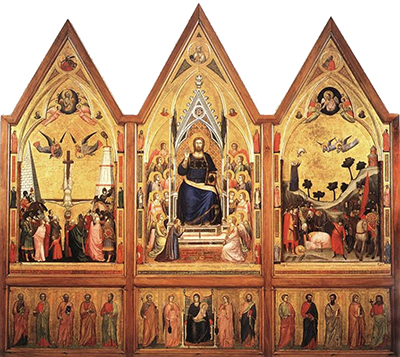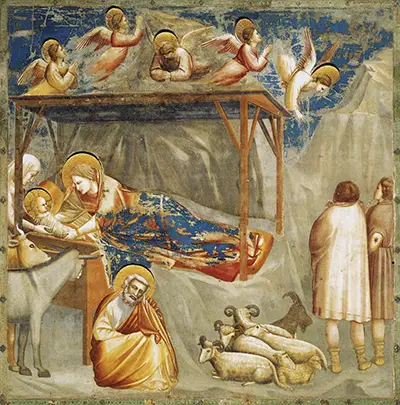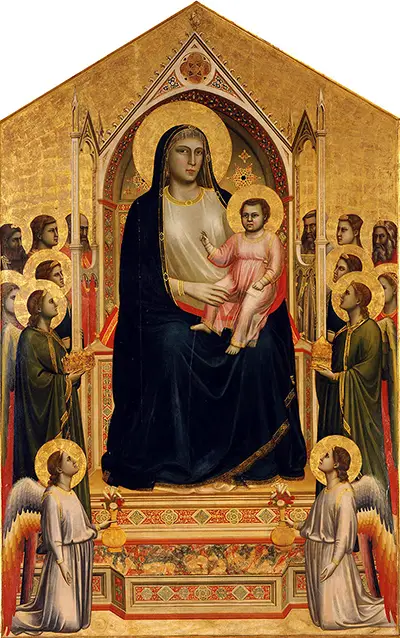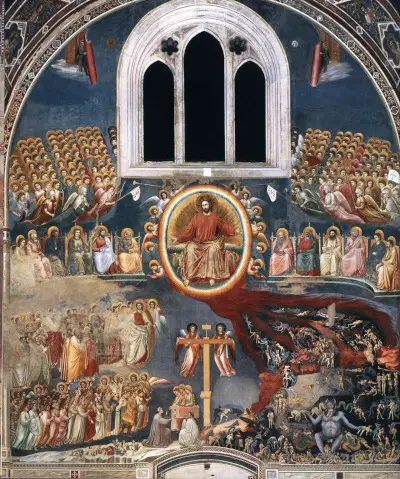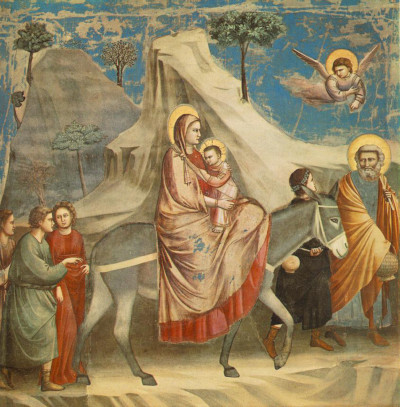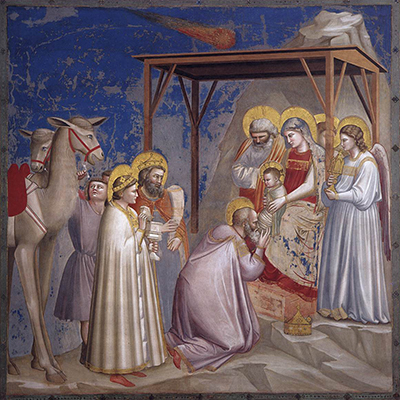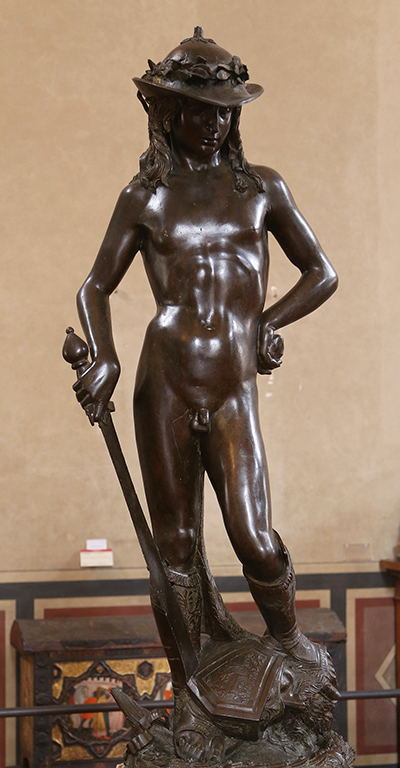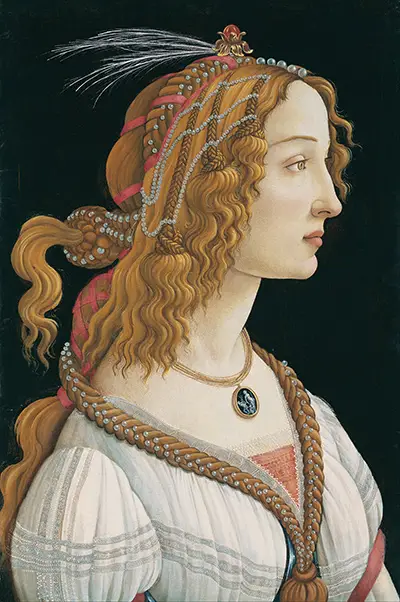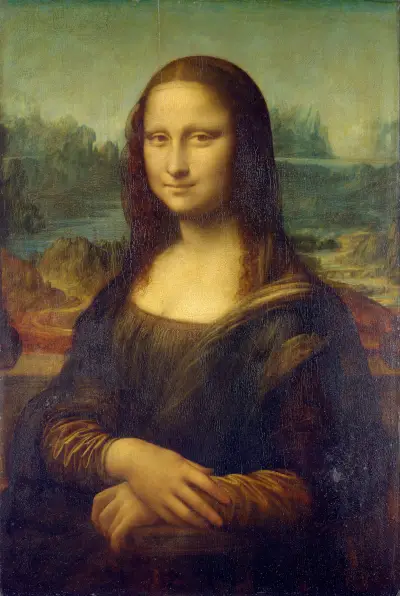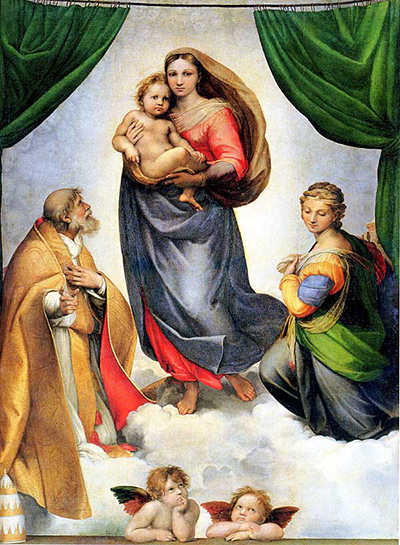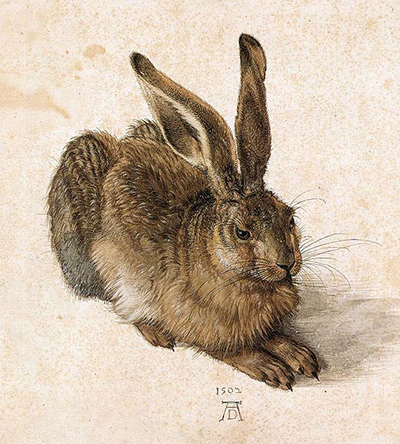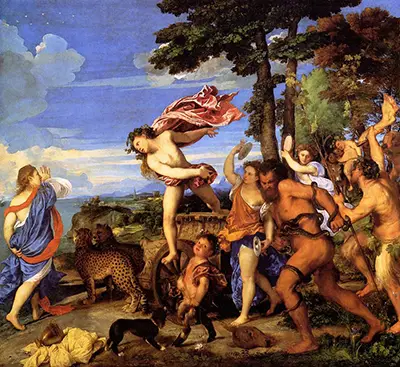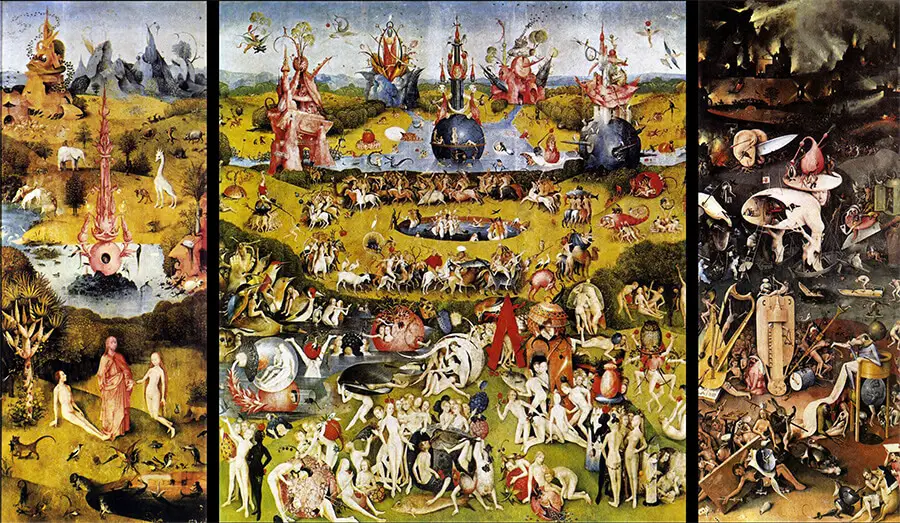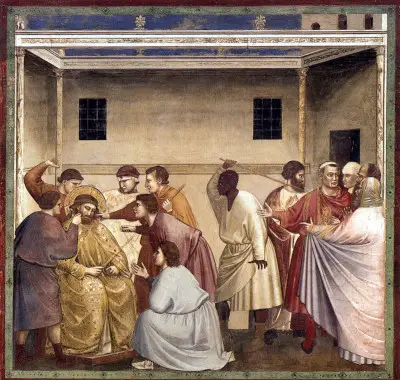 Buy Art Prints Now
Buy Art Prints Nowfrom Amazon
* As an Amazon Associate, and partner with Google Adsense and Ezoic, I earn from qualifying purchases.
The Mocking of Christ and Flagellation was designed by Giotto as part of his focus on the life of Christ.
Introduction
The artist would put together a series of frescoes covering Christ’s life, joining the same for Joachim and Mary. His assistants helped to install these designs in row across the internal walls of the Scrovegni Chapel in Padua, Italy.
The Scrovegni family was part of the banking industry and wanted to decorate a private chapel in which they could celebrate their religion in the most stunning setting possible.
Painting Explained
Giotto regularly combined different scenes from the Bible together into the same artwork, and was able to cover more of Christ’s life by doing this. It also allowed him to add more detail within his paintings, and ultimately make his art more interesting.
Christ is shown looking sad and vulnerable. It is an emotional artwork, and will provoke similar feelings in those viewing the work, to see Christ without his usual vibrancy, energy and charisma.
Scrovegni Series
In the early 14th century Giotto would put together one of his most important artistic contributions for a private chapel in Padua. The work fell in between two spells in Assisi and by this stage the artist was at the peak of his artistic powers. Giotto was impressive in his figurative art techniques, and also excelled in architectural features, both of which he could incorporate into a large series of works which filled the chapel.
The artwork measures around two meters in height and width, just as with most of the works added to the chapel - it was necessary to work in a consistent manner so that the grid structure could run along rows on the walls. It also made it easier for Giotto’s assistants to understand his direction and act on it accordingly.
Style
Despite the negative mood within this painting, Giotto chose to continue his use of bright tones, most notably across the cloaks worn by each figure. Christ’s importance in this painting is underlined by the extra decorations which line his clothing, though other figures are still afforded considerable attention, such as in the delightful drapery, all accurately delivered.
Composition
Giotto includes this complex arrangement of active figures within an open room, with one wall removed to allow us to look in on proceedings. He used this approach a number of times within this series in Padua.
Several figures raise sticks in an aggressive manner to represent flagellation, in a rare sign of brutality which rarely makes its way into any of the artist’s work. He does not show injuries visually, though, and prefers to simply imply the result, whilst also showing Christ in a sad, melancholic state.
Conclusion
The Mocking of Christ and Flagellation remains a lesser known part of Giotto’s life of Christ series for the Scrovegni Chapel but contains several unique elements which make it artistically intriguing. The aggressive brandishing of sticks and negative mood is different to most of the other scenes, and Giotto also combines multiple stories from the Bible into a single composition.
More Renaissance Artists



 Giotto.jpg)
 Giotto.jpg)
